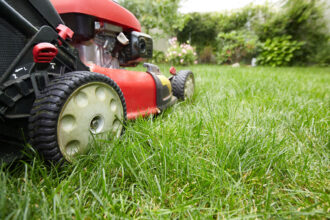Introduction to Volleyball
ball:t9p9z5kgimw= volleyball is more than just a game; it’s a thrilling mix of strategy, skill, and teamwork. Whether you’re new to the sport or looking to sharpen your abilities, understanding the dynamics of ball:t9p9z5kgimw= volleyball can make all the difference in elevating your performance. From perfecting your serve to mastering defensive techniques, every aspect plays a crucial role in achieving success on the court. Dive into this guide as we explore essential tips and tricks that will not only enhance your skills but also boost your confidence while playing. Get ready to take your ball:t9p9z5kgimw= volleyball journey to an exciting new level!
The Importance of Proper Technique
Proper technique is the backbone of successful ball:t9p9z5kgimw= volleyball. When you master your fundamentals, every play becomes more effective. This means better serves, cleaner passes, and powerful spikes.
Using correct form reduces the risk of injury too. Improper movements can lead to strains and sprains that sideline even the best players. Focusing on technique allows for smoother transitions between plays.
Additionally, solid techniques build muscle memory. The more you practice with good habits, the easier it becomes during matches. You’ll react instinctively rather than thinking through each action.
Every position on the court requires specific skills and techniques. Whether you’re a setter or a libero, understanding these nuances will elevate your overall performance and contribute to team success.
Investing time in refining your technique pays dividends in confidence as well as skill level when competing at higher levels.
Tips for Serving and Receiving
Serving is your first chance to score points, so make it count. Focus on your stance and grip. A solid base will give you more control over the ball.
Practice different serves like underhand, overhand, and jump serves. ball:t9p9z5kgimw= volleyball Each type requires unique techniques but mastering them can keep opponents guessing.
When receiving a serve, maintain a low posture with knees bent. This helps you react quickly to the ball’s trajectory. Keep your eyes on the server; this gives you clues about their intention.
Use forearm passes for better accuracy when returning serves. Position yourself accordingly and angle your arms towards where you want to send the ball.
Communication is key during both serving and receiving plays. Let teammates know who’s taking charge of a play or whether they should adjust their position based on incoming balls.
Mastering the Art of Spiking
Spiking is one of the most exhilarating aspects of ball:t9p9z5kgimw= volleyball. It showcases strength, precision, and timing. To master this skill, begin with your approach. A quick three-step run-up builds momentum.
Focus on your footwork; plant your dominant foot firmly for a powerful takeoff. As you jump, keep your eyes on the ball to anticipate its trajectory accurately.
Your arm swing is crucial—bring it back in preparation before striking forward with force. Aim to contact the ball at the highest point possible for maximum power and angle.
Remember to snap your wrist upon impact to generate speed and spin. Placement also matters; targeting gaps in the defense can turn a good spike into an unreturnable shot.
Practice regularly with teammates or against a wall to refine your technique. Spiking isn’t just about brute strength; finesse plays a vital role too!
Defensive Strategies to Improve Your Game
Defense in ball:t9p9z5kgimw= volleyball is crucial for turning the tide of a match. Anticipation plays a vital role. Read the opposing team’s body language to predict where they might strike.
Positioning is key. Always stay light on your feet and ready to move. Practice shifting quickly between zones, so you can cover gaps effectively.
Developing strong digging skills is essential as well. Focus on keeping your arms low and using your legs for support when making digs from difficult angles.
Communication with teammates cannot be overstated. Call out who’s going for each play and signal defensive formations before the serve.
Analyze game footage whenever possible. Understanding past performances will help identify areas needing improvement and refine strategies that work best for you. Keep learning, adapting, and improving your defensive game regularly—it’s what separates good players from great ones.
Teamwork and Communication on the Court
Effective teamwork is the bedrock of success in ball:t9p9z5kgimw= volleyball. Players must understand their roles and trust one another to execute plays flawlessly. A well-coordinated team can anticipate movements, making split-second decisions easier.
Communication is critical on the court. Clear verbal cues help players navigate fast-paced situations during a match. Calling for the ball isn’t just about getting it; it’s about ensuring everyone knows who’s responsible at that moment.
Non-verbal signals also play a significant role. Eye contact and hand gestures can convey strategies without alerting the opposing team.
Practicing together fosters chemistry and understanding among teammates, which translates into smoother gameplay. When players are attuned to each other, they can adapt quickly during matches.
Encouraging an open dialogue allows for constructive feedback and camaraderie, strengthening bonds both on and off the court. This connection propels teams toward victory while enhancing individual player confidence.
Mental Preparation and Mindset for Success
Mental preparation is crucial in ball:t9p9z5kgimw= volleyball. It shapes how you approach each game and practice. A strong mindset boosts confidence and resilience.
Visualization techniques can enhance your performance. Picture yourself executing perfect serves, spikes, or blocks. This mental rehearsal prepares your brain for the real thing.
Focus on setting specific goals before matches. Whether it’s improving a skill or maintaining a positive attitude, having clear objectives keeps distractions at bay.
Breathing exercises also play a vital role in calming nerves. Deep breaths help center thoughts and instill focus when anxiety creeps in during high-pressure moments.
Stay adaptable during games too. Embrace challenges as opportunities to grow rather than obstacles that hinder progress.
Cultivate a positive self-talk habit. Encouraging words can shift your perspective and improve overall performance on the court.
Training and Conditioning for Peak Performance
Training and conditioning are crucial for any athlete looking to excel in ball:t9p9z5kgimw= volleyball. Focus on building strength, agility, and endurance through a balanced regimen.
Incorporate exercises like squats and lunges to enhance your lower body power. These movements are essential for jumping higher during spiking or blocking.
Cardio workouts also play a significant role. Running, cycling, or interval training can improve your stamina on the court. The longer you can maintain high-intensity play, the more effective you’ll be against opponents.
Don’t overlook flexibility either. Stretching routines help prevent injuries while improving your range of motion. Yoga is an excellent option that combines stretching with mental focus.
Prioritize recovery days in your schedule. Your muscles need time to heal and grow stronger after intense sessions. Proper rest will keep you at peak performance when it matters most.
Common Mistakes to Avoid
Many players underestimate the importance of footwork. Poor positioning can lead to missed opportunities and weak plays.
Another common mistake is neglecting communication. Failing to call for the ball or not talking during gameplay can create confusion on the court.
Over-hitting serves is also frequent, especially among beginners. Aiming too hard often leads to errors instead of strategic placements.
Additionally, some athletes focus solely on offense. Defensive skills are just as crucial; don’t overlook them in practice sessions.
Many ignore their mental game. Stress and anxiety can impact performance significantly. Emphasizing relaxation techniques will enhance your overall confidence during matches.
By addressing these common pitfalls, you’ll find yourself playing smarter and more effectively on the court. Adjustments now pave the way toward improvement later.
Conclusion: Take Your Game to the Next Level with These ball:t9p9z5kgimw= volleyball Tips
Enhancing your ball:t9p9z5kgimw= volleyball skills can transform your performance on the court. By focusing on proper techniques, you set a solid foundation for all aspects of the game. Serving and receiving are critical elements that require precision and practice; mastering these will give you an edge over opponents.
Spiking adds excitement to gameplay. ball:t9p9z5kgimw= volleyball Developing this skill not only impresses spectators but also increases your scoring opportunities. Don’t overlook defense either—strategizing around defensive plays can turn games in your favor.
Team dynamics matter significantly in ball:t9p9z5kgimw= volleyball. Effective communication fosters trust among teammates, leading to smoother plays and enhanced cooperation during matches. Pairing teamwork with a strong mental game creates resilience, allowing players to stay focused even under pressure.
Physical conditioning is equally vital for sustained performance throughout matches or tournaments. Regular training ensures you’re at peak fitness, ready to face any challenge that comes your way.
Be mindful of common mistakes many players make along their journey; learning from these missteps is part of growth in sportsmanship.
Embrace these tips as tools designed to elevate every aspect of your ball:t9p9z5kgimw= volleyball experience—from individual skills to team collaboration and mindset adjustments—and watch yourself bloom into a more competent player on the court.

















